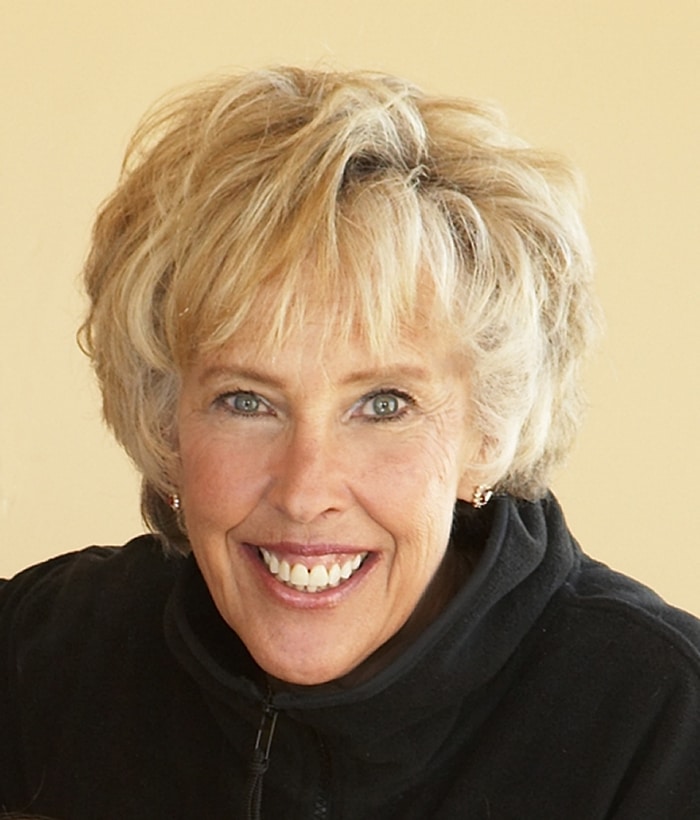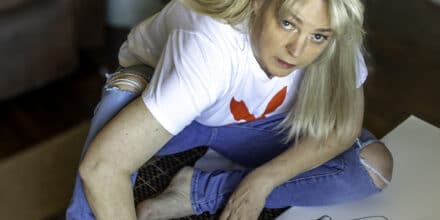Mary Ann is the founder and owner of Weems Galleries & Framing, with two locations in Albuquerque, New Mexico—the first of which opened in 1981. The galleries’ holdings represent a wide range of styles, priced from five dollars to $8K, but Mary Ann emphasizes affordable art. A dedicated supporter of the Albuquerque arts scene, she also ran a major art festival there for 32 years, which drew 50K+ customers in its final year.
Affordable Art:
- “Affordability has always been looked down upon. Art in the earlier days was always for the wealthy. And what you’re doing in creating affordable art is you’re taking artists who are willing to receive less for their artwork, which does not mean they’re lesser artists; you’re giving them a chance.”
- “I learned early that what I liked wasn’t the [popular] taste, I couldn’t use my taste alone. It was a balance … Price was absolutely imperative.”
- “We used to tell the artists, you can’t always look at time [to price it]. You’re going to have to put it in a price range that someone walks in and is inspired to buy it because it’s beautiful.”
- “Average people were very afraid to walk into galleries. Affordability became the key. You didn’t feel the intimidation.”
Recognize Your Audience, Make Your Market:
- “I loved marketing. I realized artists (and this is a generalization) were very poor business people. My idea was to teach them and take it out of the ivory tower.”
- “I’ve told my artists: get out of the state you’re living in. You have to travel and get into other markets. Get out to other galleries, or do the art fairs.”
- “When I entered the Arts and Crafts Fair in New Mexico in 1982, the highest-priced item in my booth was $100. And I sold out. I had a ball and made incredible friends, and I developed followers. Looking at other artists who weren’t doing as well as I was, they weren’t recognizing their audience.”
The Key to Longevity in the Art Market:
- “Trustworthiness. There is a tremendous amount of fraud in the art world. Hard work, seven days a week when I first started.”
- “I am an artist, so I get it. When we [at the gallery] get some money in, the artist gets paid. We have a very good reputation.”
- “If an artist sells through their own site, but feels as though the sale initiated through our gallery, they will bring us that commission…artists should have some loyalty to their gallery, too.”
The Online Market:
- “[People] who buy art off the Internet are idiots if they’re not familiar with the artist. Seeing art in person and knowing what it looks like [is imperative].”
- “I’ve known multiple people who frame what they bought on the Internet and say ‘that just doesn’t look like what I bought’.”
- “The other thing I do differently is we have a ‘check-out’ program: you come into the gallery, check out the piece and you have it for 48 hours. So you get to see that piece in your home prior to purchasing. It’s very important to see how it changes with night [and] morning light in your home.”
The Future of the Gallery Business:
- “It has changed rapidly since the 80s and 90s.”
- “I have seen a generation of younger people who appear not to have an appreciation for art and who will fill their wall with an 80-inch TV, and in the days prior to that being available, would fill it with a beautiful piece of art.
- “[Galleries] will have to be very smart and give the best service possible…and have a broader range of artwork.”
- “The gallery can’t be threatened by a fair, and the artist can’t be threatened by sending [people] to the gallery.”
- “When I sell, I tell [the customer] ‘you are not buying a product, you are buying this person… you are buying someone’s sweat, someone’s talent, someone’s life’.”
Attaining Representation:
- “Walk away [from draconian contracts]. [Galleries] could own the rights, the reproductions. No artist should be that desperate.”
- “You better like [the gallery representing you], agree with what they’re offering you.”
- “Advertising and magazines [are expensive], if you co-operate with the gallery that’s representing you, everyone can afford it a little bit more. Don’t exclude the gallery, include them. Marketing is the key. Without marketing you are nothing.”
- “I think of [business knowledge] as an asset. You have to recognize it’s not just art. It’s not just ‘everybody’s gonna love me and it’ll sell’.”
- “I speak to artists who have no business license. At least don’t pay tax on your materials! If you set up a legitimate business…take advantage of what you can do financially.”








I think there is a balance to be found as in everything. Keeping one’s prices very low may be attractive to a less wealthy clientele, indeed but art takes time to be made, and if the artist doesn’t earn enough with each piece, making art is going to stay a hobby, a thing on the side, forcing the artist to keep a day job to pay the bills and that is really not OK in my view. If you are skillful at let’s say making flowers arrangements and wanted to open a flower shop, you’d not be expected to sell your bouquets half the price of any other florist just to reach a less wealthy clientele. You would not be expected to do this because obviously you could not keep your shop going! Well… if you make paintings and sell them, you’ll need your time to be paid for in such a way that it is sustainable. The cool part is that artists today don’t need to be represented by galleries any more. They can become visible and sell their work directly and by skipping the middle man, they can be in the same time more affordable AND decently rewarded consistently. It takes the willingness to learn how to run a business and the time it takes to consistently take the steps involved in a thriving commercial venture. Because at the end of the day, you can paint all you want, your success comes through your clients buying. It is a business or it is a hobby. ANd for low prices you have the option to offer very nice reproductions of your work in defferent sizes and versions, which will make it affordable to anyone (giclees prints, cards, posters, etc…). Your originals are what should be valued fairly and paid for accordingly.